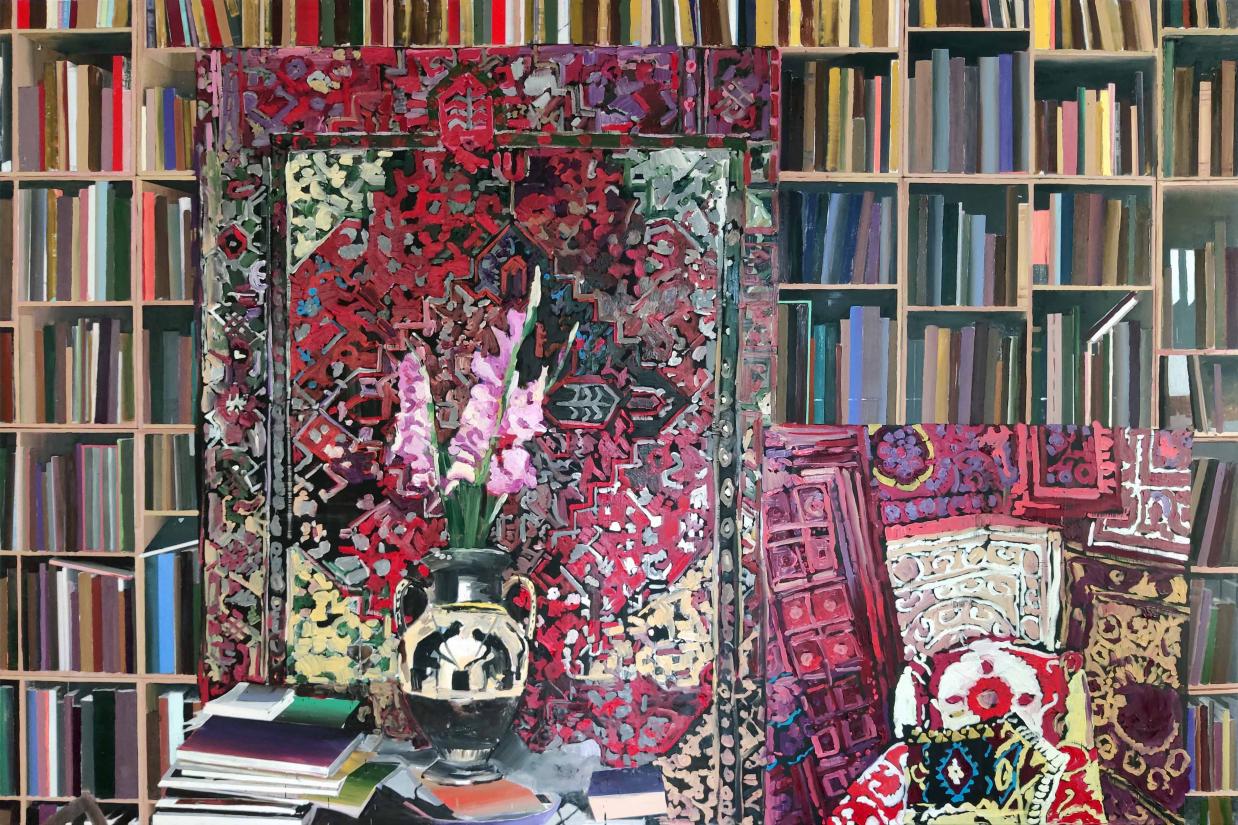The painting shows a partial view of an interior in the artist’s home, void of human presence. The arrangement in the foreground, with ornamented Turkish rugs and a Greek vase with flowers, is contrasted by the background, which is an architectural structure of stylized bookcases. The composition seems to lack spatial depth and thus conveys a dense, almost cramped feel.
The piece is part of the artist’s series Karantænebilleder (Quarantine Images), which examines ambivalent emotions during the Covid-19 lockdown. In the painting, the precariousness of the situation is contrasted by an everyday scene with a pervasive expression of beauty and homeliness.
Paths to Europe
The Cave is a study of the home as a necessary topic during Frandsen’s own isolation on the Danish island of Falster. The historical experience of being confined to Denmark is contrasted by references to objects of art from abroad that Frandsen includes in his painting, such as the ornamented rugs and the Greek vase, which comes from The Metropolitan Museum of Art in New York. The objects connect different paths and sites and act as an echo of European art history in a shut-down Europe.
Upcoming exhibition
Trapholt already owns several earlier pieces by Frandsen, and the acquisition of The Cave brings an important update of his oeuvre to Trapholt’s collection. It will feature as one of the principal pieces in Frandsen’s solo exhibition at Trapholt in 2022, which offers insights into the artist’s relationship with the objects that surround us in our daily lives. Frandsen’s sensory perceptiveness and his ability to translate his impressions to the canvas with a masterly grasp of colours are the pivotal focus of the exhibition.
About Erik A. Frandsen
Erik A. Frandsen (b. 1957) is a self-taught artist who lives and works in Copenhagen. He is represented in all the major Danish art museums and has held solo exhibitions at museums both in Denmark and abroad. In 2009, he received with the New Carlsberg Foundation’s Artist Grant. In 1996, he was awarded the Eckersberg Medal, and in 2014, the Danish Arts Foundation’s life-long honorary grant.



